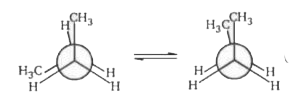A
B
C
D
Text Solution
AI Generated Solution
The correct Answer is:
|
Topper's Solved these Questions
EQUILIBRIUM
AAKASH INSTITUTE ENGLISH|Exercise Assignment (SECTION-B)(OBJECTIVE TYPE QUESTIONS (ONE OPTION IS CORRECT)|20 VideosView PlaylistEQUILIBRIUM
AAKASH INSTITUTE ENGLISH|Exercise Assignment (SECTION-C) (OBJECTIVE TYPE QUESTIONS (MORE THAN ONE OPTION ARE CORRECT)|10 VideosView PlaylistEQUILIBRIUM
AAKASH INSTITUTE ENGLISH|Exercise ASSIGNMENT (SECTION -D)|20 VideosView PlaylistENVIRONMENTAL CHEMISTRY
AAKASH INSTITUTE ENGLISH|Exercise ASSIGNMENT (SECTION-D) (Assertion - Reason Type Questions)|4 VideosView PlaylistGENERAL PRINCIPLES AND PROCESSES OF ISOLATION OF ELEMENTS
AAKASH INSTITUTE ENGLISH|Exercise Assignment (Section-D) Assertion-Reason Type Question|15 VideosView Playlist
Similar Questions
Explore conceptually related problems
Knowledge Check
Similar Questions
Explore conceptually related problems
AAKASH INSTITUTE ENGLISH-EQUILIBRIUM-Assignment (SECTION-A) (SUBJECTIVE TYPE QUESTIONS(ONE OPTION IS CORRECT)
- The following reaction takes place in the body CO(2)+H(2)OhArrH(2)CO...
02:41
|
Play - The equilibrium constant for the reaction N(2)(g)+3H(2)(g)hArr2NH(3)...
05:28
|
Play - In which of the following sysems at equlibrium and room temperature do...
02:31
|
Playing Now - The melting of ice is favoured by ………….. pressure and ………….. temperatu...
05:57
|
Play - 1.1 mole of A mixed with 2.2 mole of B and then the mixture is then ke...
05:48
|
Play - The equilibrium constant for the reaction CaSO(4).H(2)O(s)hArr CaSO(4)...
03:10
|
Play - A sample of HI(g) is placed in flask at a pressure of 0.2 atm. At equi...
04:13
|
Play - The following equilibria are given by : N(2)+3H(2) hArr 2NH(3), K(1)...
07:06
|
Play - What is the approximate OH^(-) ion concentration of a 0.150M NH(3) sol...
04:18
|
Play - For the equilibrium, N(2)O(4)hArr2NO(2) , (G(N(2)O(4))^(@))(298)=100kJ...
01:37
|
Play - The exothermic formation of ClF(3) is represented by thr equation: C...
05:21
|
Play - For the reaction 2NO(2)(g) hArr 2NO(g)+O(2)(g) K(c)=1.8xx10^(-6) at ...
04:46
|
Play - The following equilibrium exists in a closed vessel in 1L capacity A(g...
03:56
|
Play - For the reaction, H(2) + I(2)hArr 2HI, K = 47.6 . If the initial numbe...
02:37
|
Play - If pressure is increased on the equlibrium N(2)+O(2)hArr2NO the equlib...
02:22
|
Play - If K(1) and K(2) are respective equilibrium constants for two reactio...
07:43
|
Play - For the reaction CO(g)+(1)/(2) O(2)(g) hArr CO(2)(g),K(p)//K(c) is
03:52
|
Play - 500 ml vessel contains 1.5 M each of A, B, C and D at equlibrium. If 0...
03:14
|
Play - 9.2 grams of N(2)O(4(g)) is taken in a closed one litre vessel and hea...
02:25
|
Play - For the synthesis of ammonia by the reaction N(2)+3H(2)hArr2NH(3) in t...
03:33
|
Play



